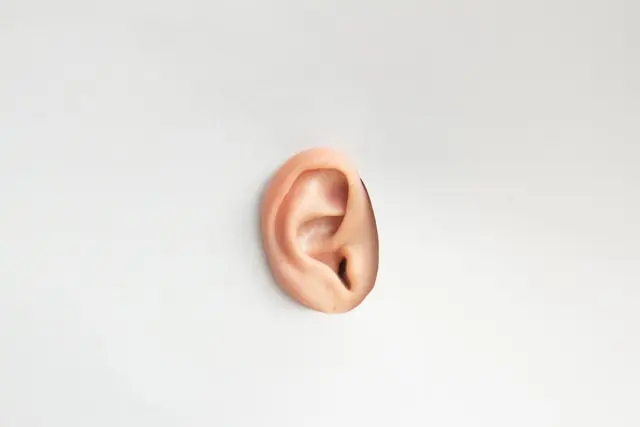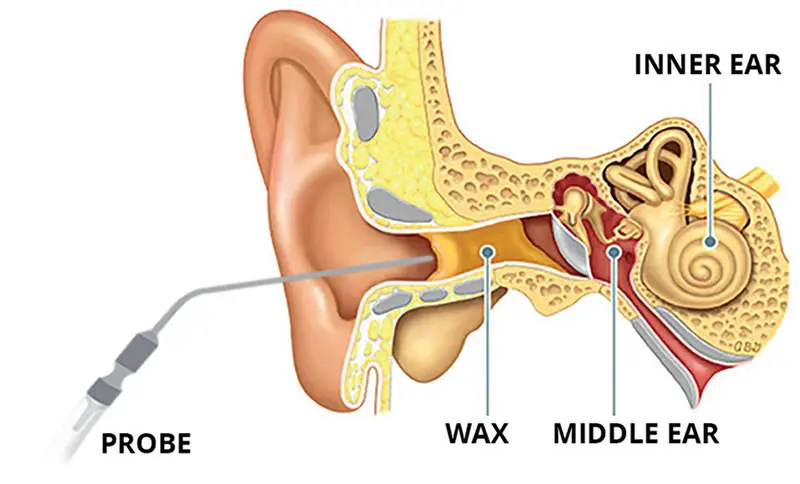
Earwax. It’s not the most glamorous topic in the world, but it’s something we all have—and for most of us, something we’ve probably never given much thought to. Often seen as something to clean out or get rid of, earwax actually plays a really important role in keeping our ears healthy.
In this post, we’ll explore everything you need to know about earwax: what it is, why it forms, when it can cause issues, and how to deal with it properly.
Earwax, or cerumen, is a natural substance produced by glands in the skin that lines your ear canal. It’s made from a mixture of shed skin cells, tiny hairs, and secretions from oil and wax-producing glands.
Far from being dirty or something to remove at every opportunity, earwax is there for a reason. In fact, your ears rely on it to function properly and stay protected.
Although it might not look particularly appealing, earwax is part of your body’s clever built-in defence system.
It helps trap dust, debris, and even tiny insects, stopping them from going further into the ear. It also has antibacterial properties, helping to prevent infections, and it keeps the skin inside your ears from drying out and becoming irritated.
Interestingly, your ears are also self-cleaning. As you chew, talk, or move your jaw, older earwax gradually makes its way out of the canal, where it either flakes off or is washed away during washing or showering.
In most people, earwax comes and goes without causing any bother. But sometimes, it can build up or become impacted, which may lead to discomfort or hearing issues.
Common signs of a build-up include:
It’s also worth noting that some people can have a significant wax blockage without noticing symptoms until their hearing suddenly drops or becomes dull.
There are several reasons why earwax might start to cause trouble. One of the most common is using cotton buds (or Q-tips). Although they might feel like they’re helping, they actually push the wax further into the canal, where it becomes compacted.
Wearing in-ear headphones, hearing aids, or earplugs regularly can also interfere with the ear’s natural cleaning mechanism. Some people naturally produce more wax, or have narrower or more curved ear canals, making it harder for the wax to exit.
Skin conditions like eczema, or simply getting older (which can cause wax to become drier and harder), also increase the risk of blockage.
The simple answer? Most of the time, you don’t need to. Your ears are usually very good at looking after themselves.
If you do feel the need to manage your earwax at home, it’s best to stick with gentle approaches. Using a damp cloth to wipe around the outside of the ear is perfectly safe. Occasionally, softening the wax with a few drops of olive oil or a pharmacy-grade earwax softener can help it move out on its own.
What you should avoid at all costs is inserting anything into the ear canal—no cotton buds, bobby pins, or similar items. You should also steer clear of ‘ear candles’, which have been proven ineffective and can be dangerous.
If you’re experiencing symptoms of a blockage, or if you’re unsure whether earwax is the cause, it’s a good idea to see a trained professional. Using an otoscope (a small lighted device), they can take a look inside your ear and assess the situation.
There are several safe and effective methods for removing earwax professionally. Microsuction is a popular option, using a small suction device to gently remove the wax. Manual removal using specialist tools may also be used, especially if the wax is dry or stubborn. In some cases, gentle irrigation (flushing with warm water) may be suitable, although this method is used less often nowadays due to a slightly higher risk of irritation or infection.
If you’ve had ear surgery in the past, wear hearing aids, or are prone to ear infections, it’s especially important not to attempt removal yourself and to seek expert care.

If you wear hearing aids, you might find earwax to be a more regular concern. Not only can it block your ear canal, it can also clog the microphone or receiver parts of your device. This is one of the most common causes of hearing aid breakdowns. Regular ear checks and proper cleaning routines will help keep your hearing aids in good working order.
There are a few persistent myths surrounding earwax that are worth clearing up.
Firstly, earwax is not a sign of poor hygiene. In fact, having no earwax at all can be a problem, as it means your ears are lacking protection. Secondly, cleaning your ears excessively doesn’t make them healthier—it can actually cause dryness, irritation, or even infections.
Finally, the colour of your earwax doesn’t necessarily mean anything is wrong. It can range from light yellow to dark brown, depending on factors like age, skin type, and time exposed to air. Darker wax isn’t “worse” than lighter wax; it’s just different.
Earwax might not be something you think about often, but it plays an essential role in ear health. While it’s usually harmless and self-managing, there are times when it can become a nuisance or cause symptoms.
If you’re experiencing hearing loss, blocked ears, or ongoing discomfort, it’s worth booking a quick check with a professional. Earwax removal is usually straightforward, painless, and can make an immediate difference to your hearing and comfort.
So next time you reach for a cotton bud, take a pause. Your ears are smarter than you think—and sometimes, the best thing you can do is let them get on with the job.
Need support with earwax removal?
We offer professional microsuction and other ear care services in a calm, comfortable setting. Whether you’re feeling blocked or just want peace of mind, we’re here to help. Book online or contact us today.
Complete our form to book your appointment through our online portal.
Our Blogs